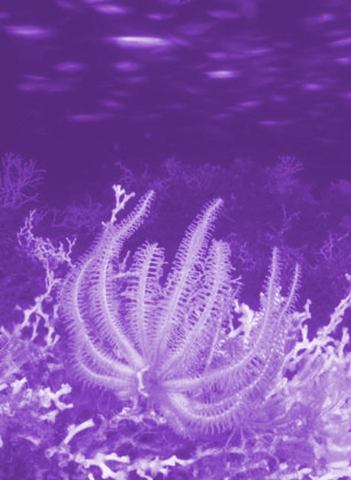Soft threshold shown
 Life in the deep sea may not be as sparse as once believed.
Life in the deep sea may not be as sparse as once believed.
International researchers have stunned the scientific world with a remarkable discovery deep beneath the ocean waves.
Contrary to expectations, the number of animal species dwelling near the deep sea's bottom remains consistent with depth, defying conventional wisdom about this mysterious ecosystem.
But there is a twist - a clear boundary at 4.5km brings about a shift in the sea creature cast.
Shells are stars above, while deeper zones see the rise of soft-bodied celebrities like anemones, glass sponges, and sea cucumbers.
The abyssal zone, covering a whopping 60 per cent of Earth's surface, has long been the least explored habitat, hiding between 3 and 6 km below the surface where sunlight cannot venture.
Temperatures are icy cold, pressure is crushing, and only the fittest survive. It's believed to hold fewer species compared to shallower waters, but the secret of how biodiversity changes within this enigmatic abyss remains elusive.
But Erik Simon-Lledó and a group of intrepid scientists have plunged into the depths armed with data from over 50,000 megafauna living near the seabed.
Their 12 deep-sea expeditions in the Pacific Ocean's Clarion-Clipperton Zone revealed a sensational revelation: two distinct deep-sea communities.
Between 3.8 and 4.3km lies a shallow abyssal zone ruled by soft corals, brittle stars, and shelled molluscs. Deeper down, between 4.8 and 5.3km, the stage transforms, and a new cast emerges - showcasing the talents of anemones, glass sponges, and sea cucumbers in all their soft-bodied glory.
The transition zone between these depths, a wild mix of the two communities, keeps the biodiversity party going strong.
The big reveal lies in the carbonate compensation depth: the moment seawater becomes calcium carbonate-deprived, leaving no room for the construction of animal shells.
But the newfound wonders face an uncertain future.
Climate change and ocean acidification, along with the looming threat of deep-sea mining, cast shadows on this delicate ecosystem.
As they ponder this underwater spectacle, researchers hope the world can preserve this captivating show for generations to come.
The full study is accessible here.








 Print
Print